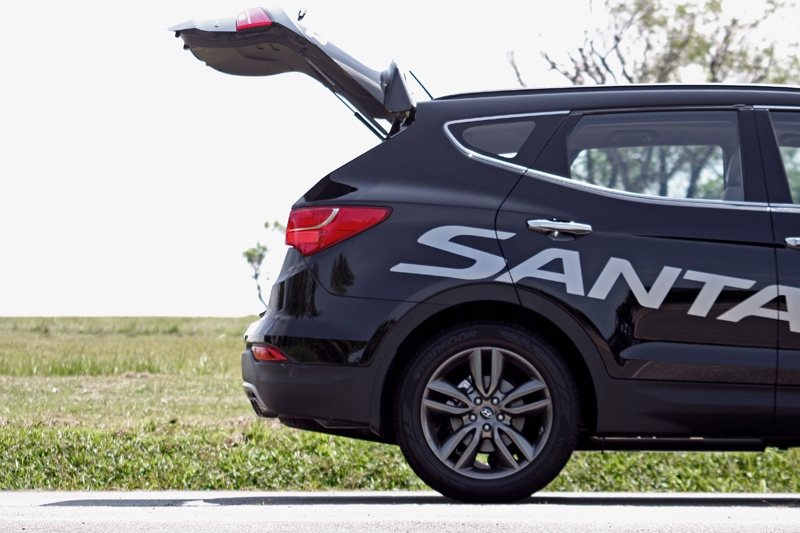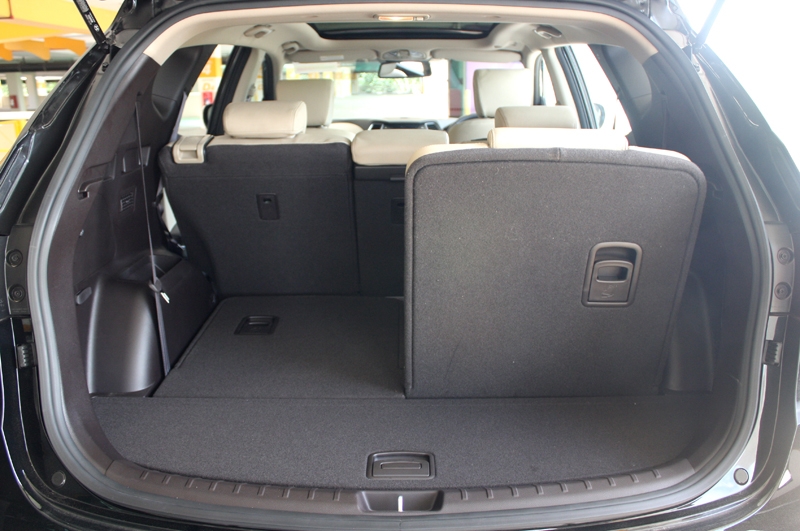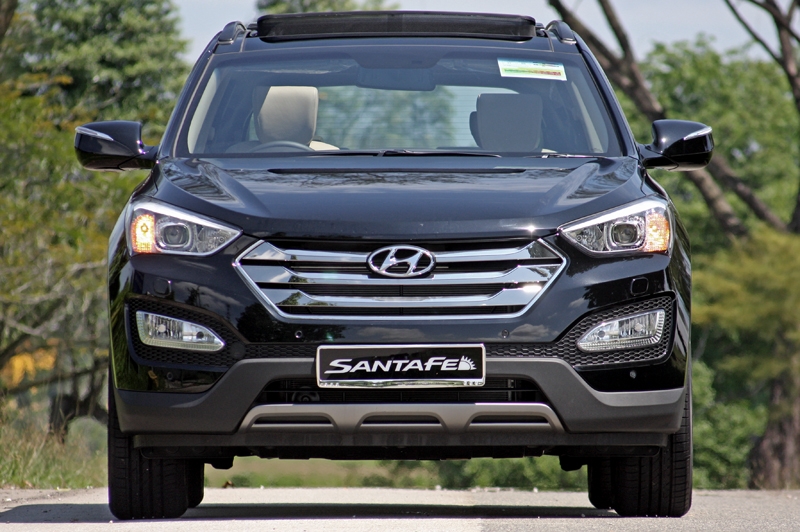The Santa Fe returns with a classier and bolder look, showcasing the Korean’s new upmarket identity; question is, does it drive as good?
Photos: Azfar Hashim
The thought of Singaporeans buying SUVs by the truckload is still baffling; after all in a concrete jungle like ours, where can you possibly find the space (or time) to go mud digging?
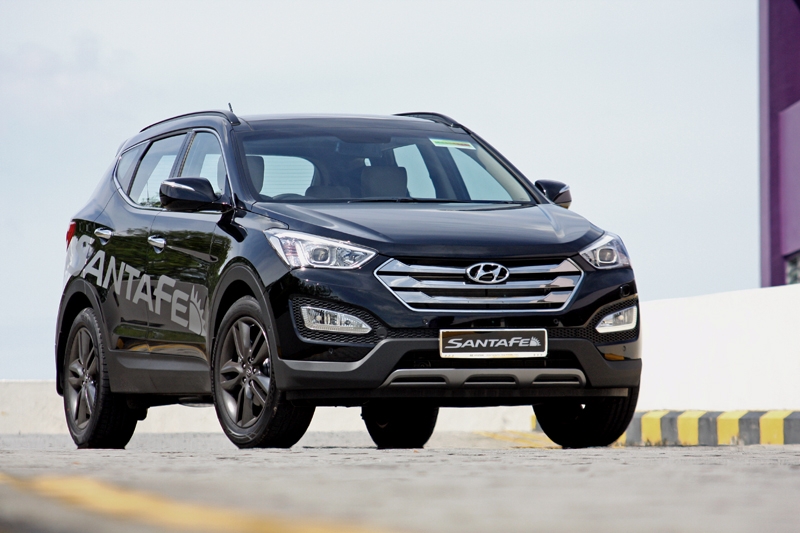
Then the flood came. And again. Suddenly, buying an SUV makes so much sense. Jokes aside, most SUV drivers made the decision to get one because of the simple fact that it provides the ability to look further ahead in congestions; a sense of security, in other words.
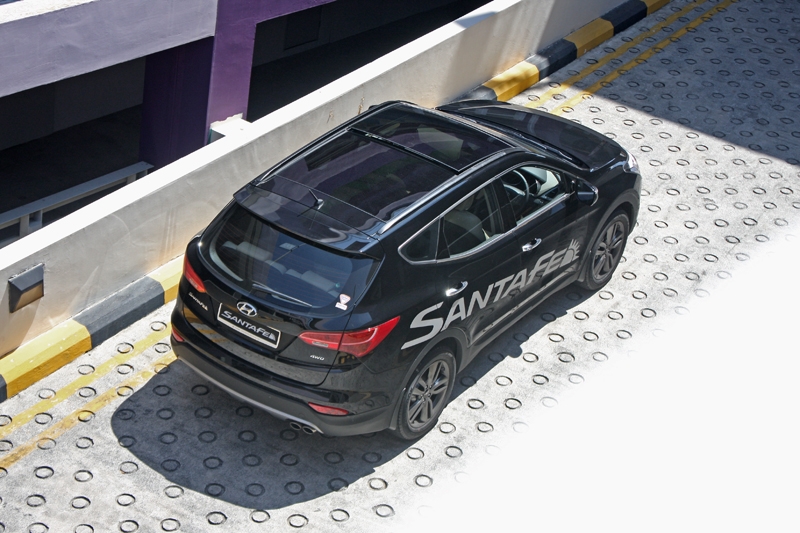
On top of that, there’s also the car-like refinement; SUVs have morphed from, once, unrefined bush-busting wagon on stilts to comfortable and practical alternatives to the usual sedans.
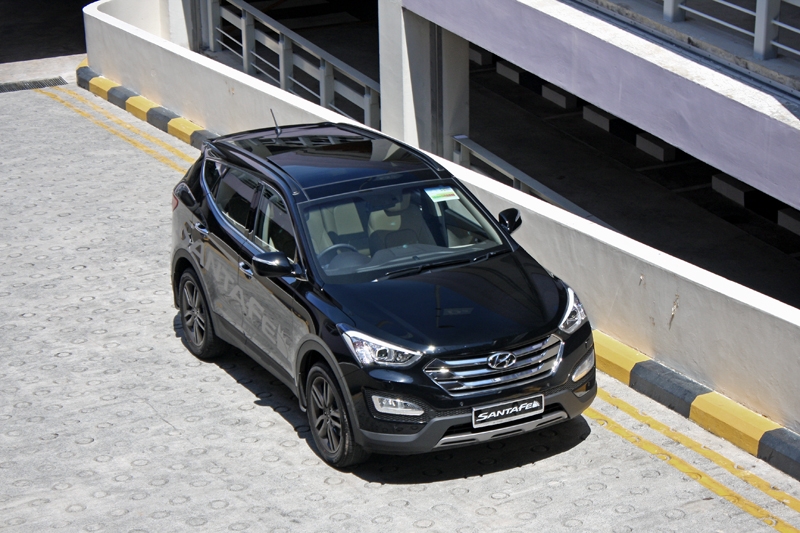
The new Santa Fe seems to have taken to this particular order very, very well. For starters, compared to it’s predecessor, the new Santa Fe seems well suited up. Now, it looks both sleek and bold, a testament to the hardworking designers with their pens and carving knives. And also unlike before, the rear doesn’t look ‘rear heavy’ what with those long overhangs - Hyundai did a brilliant job of refining these small details, and making their big family SUV pleasing to the eye.
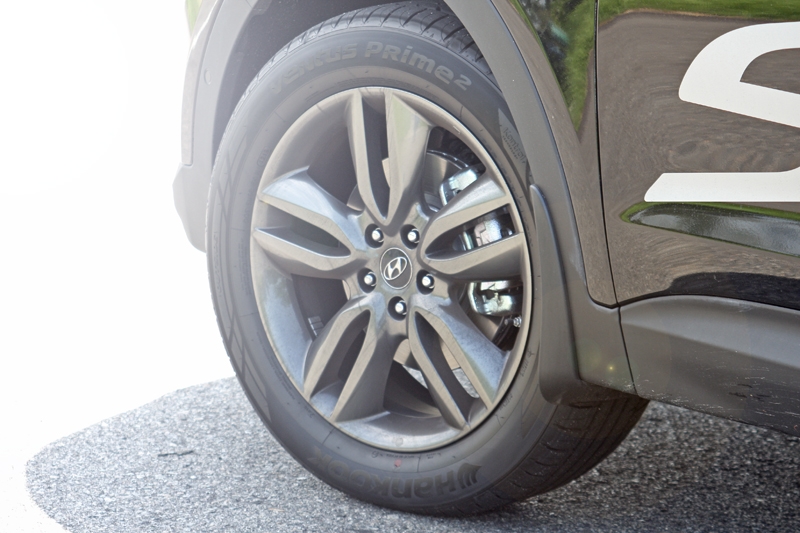
Besides the much, much better exterior, the new Santa Fe is well specified too. 18-inch alloys come standard, along with a pair of sunroof. The roof rails will surely come in useful for cycling enthusiasts — all you need are a set of bicycle racks and you’re set to mount your bikes.
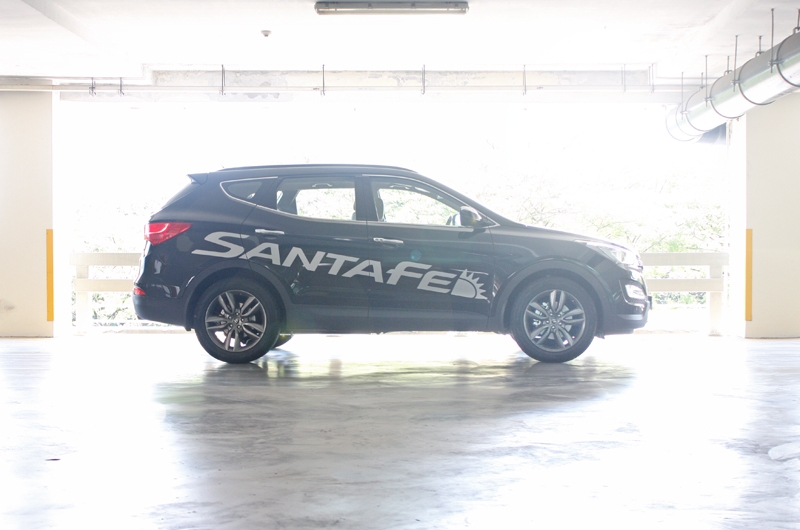
Worth mentioning are the wide opening rear doors, which makes it useful for both ingress and egress for passengers of all sizes. Access to the third row of seats, as tested, is perfect for children — release a catch on either sides of the second row seat, and the backrest folds down before the seat slides forward. However if you’re an adult relegated to that row (for any reason unknown to mankind), it might be a little tricky — best if you have some background in gymnastics. That said, an average sized adult could still occupy the last row with decent amount of leg and headroom... over a short distance. Oh and fret not: there are still air-con vents back there to keep you cool.
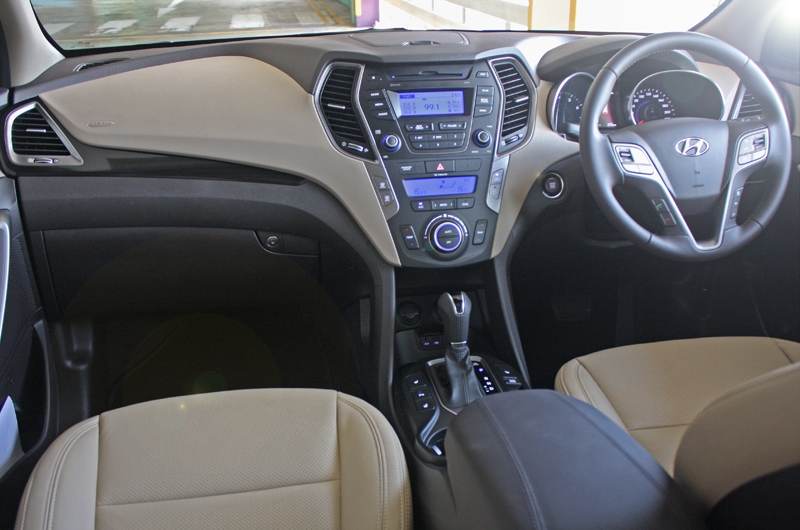
The Santa Fe’s cockpit is definitely the best in class - next to the likes of the Kia Sorento, Chevrolet Captiva and Toyota Fortuner (yes, in that order) - in terms of build quality and visual appeal. Buttons for both the audio system and climate control are laid within easy reach for the driver, and if that’s still not enough, you have the convenience for - again - the audio system, multi-display monitor and mobile phone Bluetooth system on the nicely sized steering wheel. Just short of fixing a missile launch control button eh, Hyundai?
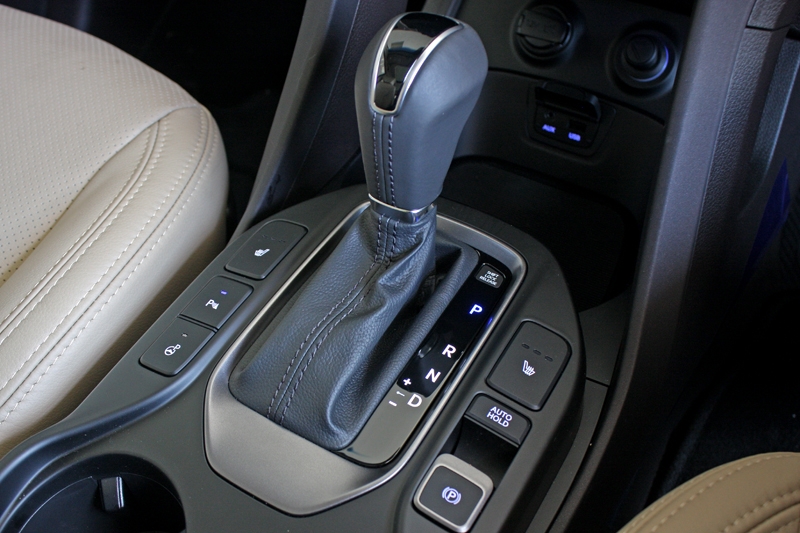
However I do question the placement of the engine start/stop button. Seems a little hidden from the eye at my optimal driving position; you definitely need some getting used to fiddling around for it the first few times (“where’s that %#$@ button!”). That aside, the Santa Fe also comes with more goodies. Heated front seats come standard along with an auto hold function for the brakes (no need to step on the brake pedal at the traffic light, rejoice!) and — the highlight — an auto park function that assists you during parallel parking; very useful considering (a) the average size of our parallel parking lots, (b) parallel parking skill of the average Singaporean driver and (c) the Santa Fe’s rather longish length of 4.7-metres.
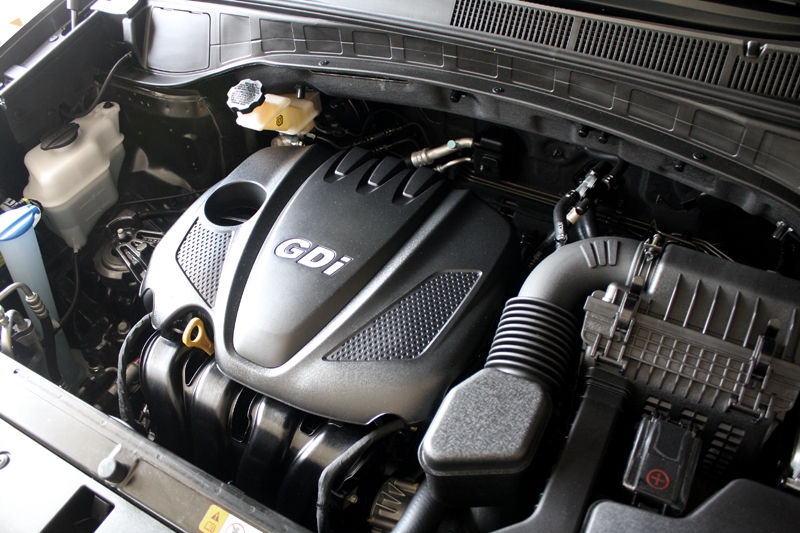
Powering the Santa Fe is Hyundai’s 4-cylinders, 16-valves 2.4-litre Dual CVVT petrol engine. Mated to a 6-speed automatic transmission, it whips out a rather generous 192 bhp and 242 Nm of torque. Putting in mind it’s 1.7-tonne kerb weight, the 10.9 seconds century sprint timing is, for no better word, decent. It may not be the world’s fastest SUV, but getting up to speed is a brisk affair; in fact, there’s no real need to floor the accelerator most times. And if you do need the power to overtake, simply utilize the steering mounted paddle-shifters to shift the gears down, give the right pedal three-quarter prod and you’re on your way to passing that road-hogging Altis.
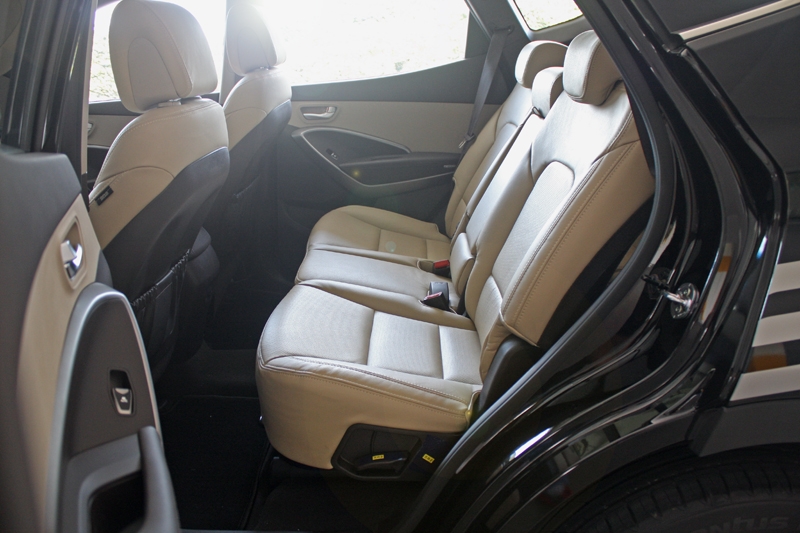
Cabin insulation is a strong trait of the Santa Fe. Besides the class leading level in terms of Noise, Vibration and Harshness (NVH), the engine doesn’t sound throaty at higher rpms. At the same time, tyre and wind noise at higher speeds won’t cause everyone in the car to break into screaming competitions, even if the conversation is, say, between the front and last row passenger (“Timothy, can you please stop pulling your sister’s hair?”).
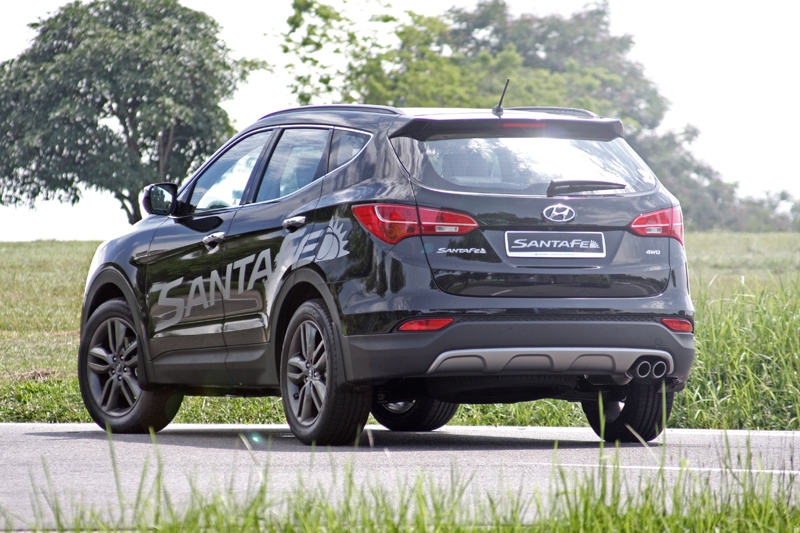
For an SUV, the Santa Claus… err… Santa Fe handles with a level that puts it close to the league of more premium players (think along the lines of the Volvo XC60 and BMW X3). There’s that assuring surefootedness at expressway speeds and when the road turns twisty, you can still feel exactly where the front two wheels are heading with the rear following suit in a rather safe manner. In case you have relatives living in some remote, off the beaten path location up North, the permanent all-wheel drive is a standard fixture here — this will also come in handy when the Orchard Road flood comes to visit…
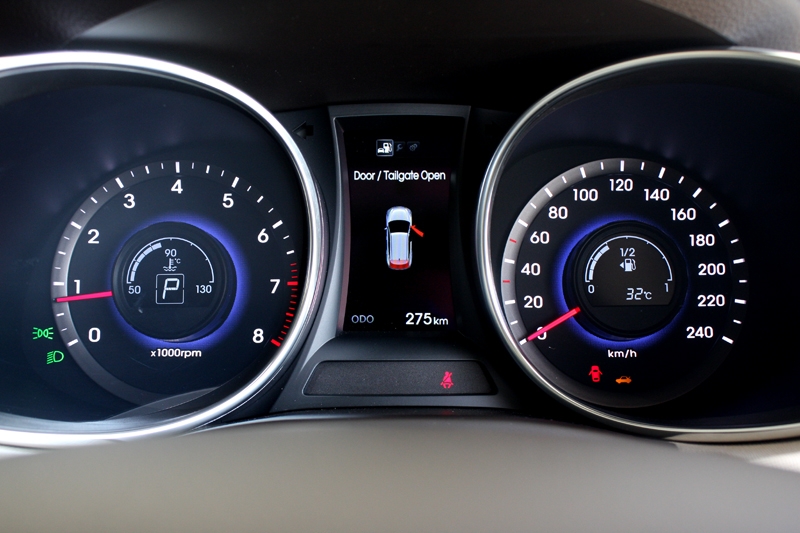
A Hyundai first is the ‘Flex Steer’, another standard item. You can toggle between three different modes — Normal, Comfort, Sport — and what this does is allow you to drive with your preferred steering weight: Comfort being the lightest and Sport being the heaviest. I must say that Comfort is humanly useful for maneuvering this 1.7-metres tall SUV in multi-storey car parks. Sport, however, may come across as overly artificial.
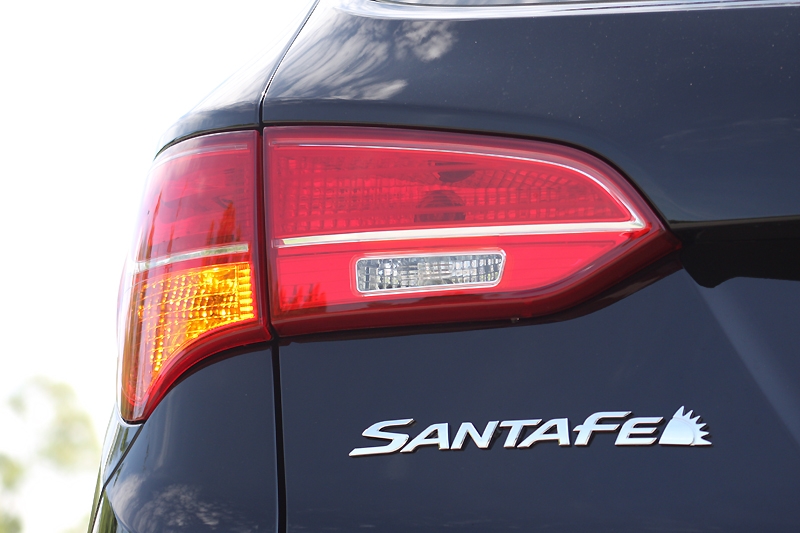
At the end of the day, what the Santa Fe promises is an all-rounded family-oriented SUV that has all the load-lugging capability — which it passes with flying colours, besides showing also a thing or two to its aging competitions, the Captiva and Fortuner. Feature packed and with a refined cabin, it should be the wise family man’s choice.
